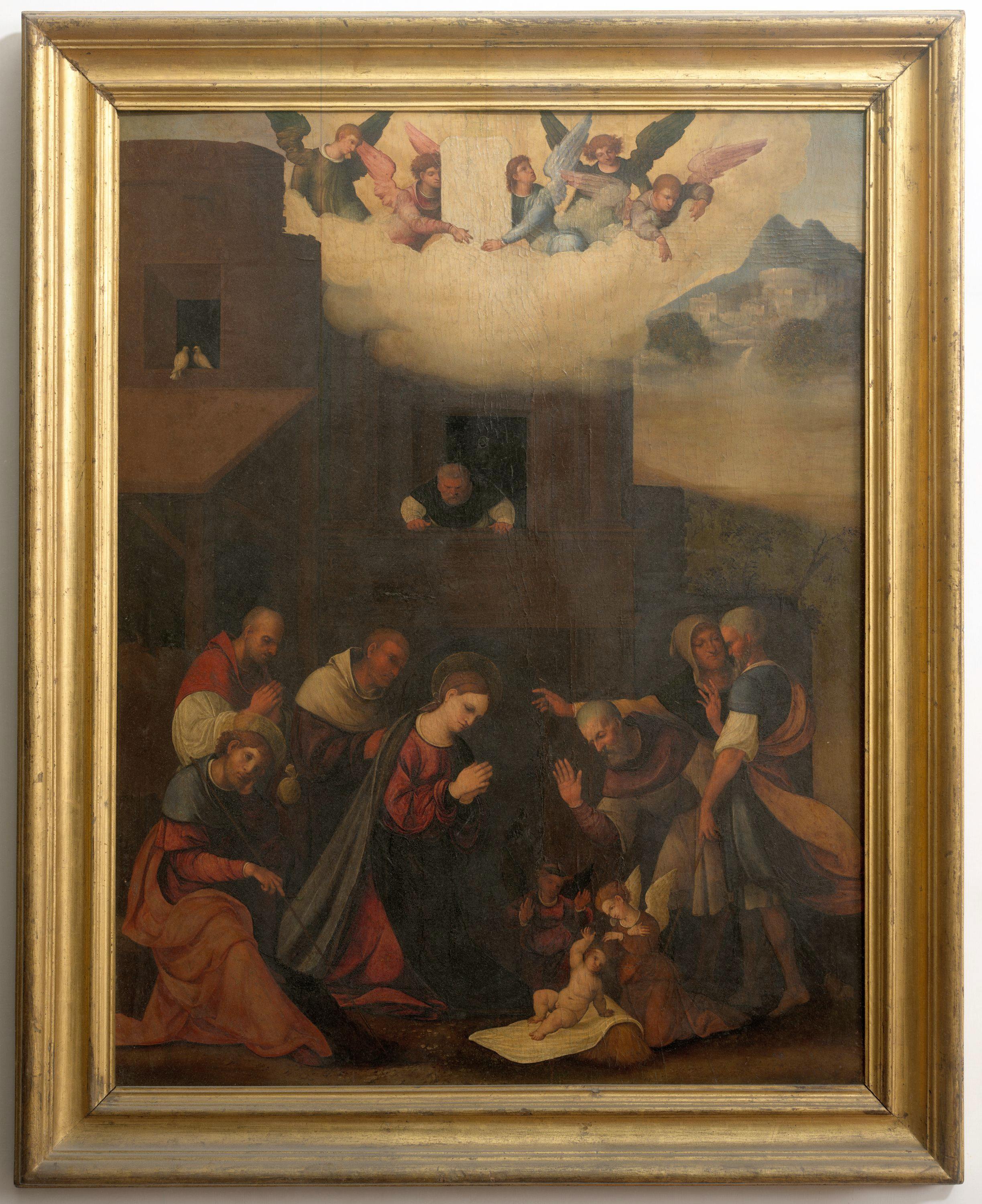Adoration of the Shepherds
Ludovico Mazzolino (Ferrara 1480 circa - 1528/1530)
Ludovico Mazzolino was one of the most popular painters from the magnificent court of Alfonso I d'Este of Ferrara, mainly due to his small panels with sacred themes usually executed for private devotional purposes. Born in Ferrara, in his youth the artist probably spent a period of apprenticeship in the workshop of Lorenzo Costa, a court painter for the Bentivoglio family from Bologna, a university city traditionally inclined towards the assimilation of northern figurative culture (Po Valley and Germanic), the spread of which was reinforced by the marriages between the same Bentivoglio and the ruling families of Milan, Visconti and Sforza.
The calm naturalness of the whole scene, accentuated by its subdued and almost Lombard tones, accompanies the atmosphere of silent prayer that fits perfectly with the theme of Adoration. Mazzolino's usual narrative liveliness is expressed by the monk who looks out curiously from the terrace and by a lively group of angels who, from above the clouds, are watching the scene. In particular, one of the angels wants to pay homage to the Child and stands before him. Probably those who commissioned the work, also taking into account the humble setting that well suits the scene, should be traced back within the monastic environment. As a matter of fact, the artist gave the painting an atmosphere of pious simplicity, which is accentuated by the humanity of the figures gathered in adoration on the bare ground, thus recalling German and Flemish models. In the background, a cluster of trees fades into the distance to reach a town surrounded by greenery at the foothills of a mountain. Mazzolino used to take inspiration from antiquity for the almost theatrical backdrops of sacred scenes, that were so appreciated by his cultured humanist clients from Ferrara. The artist's antiquarian interest, which was manifested elsewhere with sumptuous suggestions (as in the 'Circumcision of Jesus’ at the Uffizi, inv. 1890 no. 1355), can be recognised only in the sober buildings in disrepair, which are deprived of their decorations in the same way as certain city backgrounds appear in the engravings by Marcantonio Raimondi and his circle (e.g. in the Massacre of the Innocents at GDSU, no. 245, Loose Prints and in the so-called Madonna with the Long Thigh at GDSU, inv. 247 Loose Prints). Such works were inspired by Raphaelesque scenes and widespread across the most important European workshops and courts from the second decade of the 16th century.
From the 'Guardaroba' of the Grand Duke, the work entered the Uffizi Gallery in 1800.
S. Zamboni, Ludovico Mazzolino, Milano 1968, pp. 21 e 42, n. 24, tav. 13; A. Ballarin, Dosso Dossi. La pittura a Ferrara negli anni del ducato di Alfonso I, Cittadella (PD) 1995, V.I, p. 257, n. 189; Adorazione dei pastori - Lodovico Mazzolino, “Catalogo Generale dei Beni Culturali”, (https://catalogo.beniculturali.it/detail/HistoricOrArtisticProperty/0900287773).
